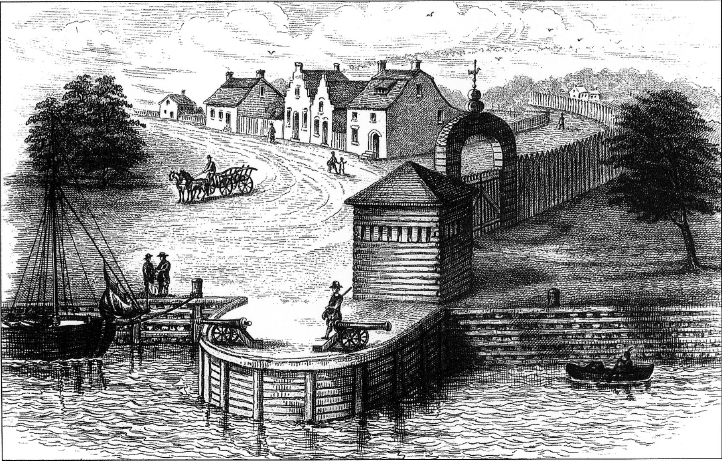America’s History: Printed Page 58
America: A Concise History: Printed Page 50
America’s History: Value Edition: Printed Page 48
New Netherland
By 1600, Amsterdam had become the financial and commercial hub of northern Europe, and Dutch financiers dominated the European banking, insurance, and textile industries. Dutch merchants owned more ships and employed more sailors than did the combined fleets of England, France, and Spain. Indeed, the Dutch managed much of the world’s commerce. During their struggle for independence from Spain and Portugal (ruled by Spanish monarchs, 1580–1640), the Dutch seized Portuguese forts in Africa and Indonesia and sugar plantations in Brazil. These conquests gave the Dutch control of the Atlantic trade in slaves and sugar and the Indian Ocean commerce in East Indian spices and Chinese silks and ceramics (Map 2.5).

In 1609, Dutch merchants dispatched the English mariner Henry Hudson to locate a navigable route to the riches of the East Indies. What he found as he probed the rivers of northeast America was a fur bonanza. Following Hudson’s exploration of the river that now bears his name, the merchants built Fort Orange (Albany) in 1614 to trade for furs with the Munsee and Iroquois Indians. Then, in 1621, the Dutch government chartered the West India Company, which founded the colony of New Netherland, set up New Amsterdam (on Manhattan Island) as its capital, and brought in farmers and artisans to make the enterprise self-sustaining. The new colony did not thrive. The population of the Dutch Republic was too small to support much emigration — just 1.5 million people, compared to 5 million in Britain and 20 million in France — and its migrants sought riches in Southeast Asia rather than fur-trading profits in America. To protect its colony from rival European nations, the West India Company granted huge estates along the Hudson River to wealthy Dutchmen who promised to populate them. But by 1664, New Netherland had only 5,000 residents, and fewer than half of them were Dutch.

Like New France, New Netherland flourished as a fur-trading enterprise. Trade with the powerful Iroquois, though rocky at first, gradually improved. But Dutch settlers had less respect for their Algonquian-speaking neighbors. They seized prime farming land from the Algonquian peoples and took over their trading network, which exchanged corn and wampum from Long Island for furs from Maine. In response, in 1643 the Algonquians launched attacks that nearly destroyed the colony. “Almost every place is abandoned,” a settler lamented, “whilst the Indians daily threaten to overwhelm us.” To defeat the Algonquians, the Dutch waged vicious warfare — maiming, burning, and killing hundreds of men, women, and children — and formed an alliance with the Mohawks, who were no less brutal. The grim progression of Euro-Indian relations — an uneasy welcome, followed by rising tensions and war — afflicted even the Dutch, who had few designs on Indian lands or on their “unregenerate” souls and were only looking to do business.
After the crippling Indian war, the West India Company ignored New Netherland and expanded its profitable trade in African slaves and Brazilian sugar. In New Amsterdam, Governor Peter Stuyvesant ruled in an authoritarian fashion, rejecting demands for a representative system of government and alienating the colony’s diverse Dutch, English, and Swedish residents. Consequently, the residents of New Netherland offered little resistance when England invaded the colony in 1664. New Netherland became New York and fell under English control.
IDENTIFY CAUSES
Question
Why did New France and New Netherland struggle to attract colonists?